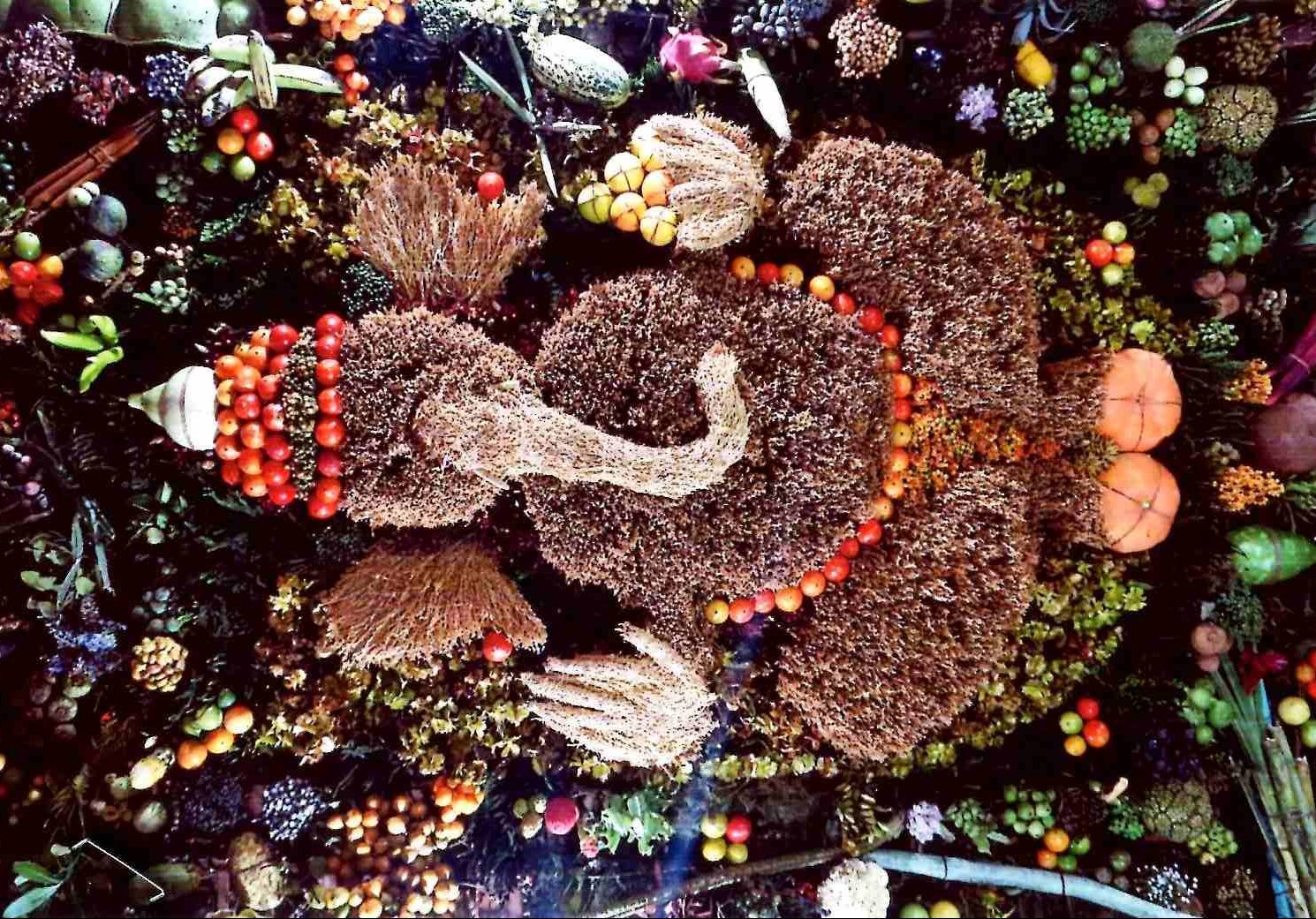As many in the state may have observed, just before Ganesh Chaturthi, there are various places in Goa where Matoli bazaars comes to life. The one in Banastarim is very popular, whereas, the one in Panaji was the most visible when it was set up on the footpath besides the bank of River Mandovi (this year it suffered due to change in location). This tradition holds a plethora of information that is in the danger of being lost.
As many other traditions face an uncertain future, the tradition of setting up of a Matoli too faces the danger of being forgotten. It is made up of leaves, fruits, flowers, rhizomes, tubers, corms, seeds and nuts. These components are usually made up of wild varieties and species, and can be seen only when they are used in the Matoli.
It reflects the vast knowledge acquired by Goans over the past centuries. The Matoli display is made up of edible, non edible fruits, medicinal and poisonous plants, fruits etc. It is a good chance to display and learn about the indigenous flora.
It is true that the tradition is getting diluted or losing it sheen due to the rapid development that is taking place across the state which has shrunk the forest cover, there is still time to sustain the tradition by encouraging and acquiring knowledge about various items used for Matoli display.
Hopefully, Goans will continue to use the traditional way of decorating a Matoli and pass on the information to the younger generations as information once lost is very difficult to regain.
Some of the items and their uses were listed by ToI in its recent article:
Pendhare (Tamilnadia uliginosa)
These green coloured unripe fruits can be eaten as also used as astringent. The cover of the immature fruit is useful in dysentery
Anaya (Lagerstroemia parviflora)
The tree is valued for its timber. An edible gum is obtained from the tree. Its bark is a source of tannins. A fibre obtained from the bark is used to make a rough rope
Kankiche komb (Dendrocalamus strictus)
Tender shoots of these wild bamboos are edible. Villagers eat the bamboo to reduce body heat.
Ghagaryo (Connarus monocarpus)
From the roots of this wild tree an oil is extracted which is used to reduce swelling.
Hirda (Terminalia chebula)
Very high in medicinal properties, the fruit of the tree finds use as a laxative, tonic and in the treatment of eye diseases.
Bhillo mad (Caryota urens)
A porridge prepared from the flower of the plant is prescribed to treat gastric ulcers and migraine
Kokaro (Sterculia guttata)
The seeds of the plant are roasted and eaten as nuts. Usually cooked, they are rich in oil.
Tivar (Barringtonia acutangula)
Juice of the leaves this plant finds used in treatment of dysentery and diarrhoea. A paste of the fruit is applied on the chest and abdomen of children suffering from a respiratory attack.
Keshar (Bixa orellana)
The tree bears pods the seeds of which are used to lend colour to food. The shoots and young leaves of the tree are used to reduce cholesterol.
Kudduk (Celosia argentea)
Seeds of the plant are used in the treatment of kidney stone disorder and diarrhoea. In Goa, the tender leaves are used in vegetarian preparations
Bharangi (Clerodendrum serratum)
A preparation from the tender leaves of the plant is given to asthma patient. The roots are used in the treatment of fever and cough.
Kuda (Holarrhena pubescens)
A preparation from the tender pods of the plant is used in treating diarrhoea and asthma.
Navali (Merremia vitifolia)
The leaves of the plant find use in vegetarian preparations. The leaves are also used to treat urinary problems.
Fagla (Momordica dioica)
From the fruit of this plant a delicious vegetarian preparation is cooked, which is especially good for diabetics. The roots of the creeper are used to treat fever and asthma.
Ran-halad (Curcuma pseudomontana)
A wild variety of turmeric, its rhizomes can be used to prepare pickle. A paste of the rhizomes is used to treat scabies and itching.
Ran-vayangi (Solanum anguivi)
A wild variety of brinjal, the fruit is used to treat cough while the roots find use in treating veterinary diseases.
Vagh-chapako (Gloriosa superba)
The paste obtained from the tuber of this plant used to be applied to the stomach of a pregnant woman to ease delivery.
Ran karmal (Dillienia indica)
From the fruit of the tree a juice is extracted which is mixed with sugar and water and used a cooling beverage in the treatment of fever. The fruit pulp is used in curries, jam and jellies. The leaves are useful in treating leg pain.
Information credit: ToI
Image credit: Digital goa


